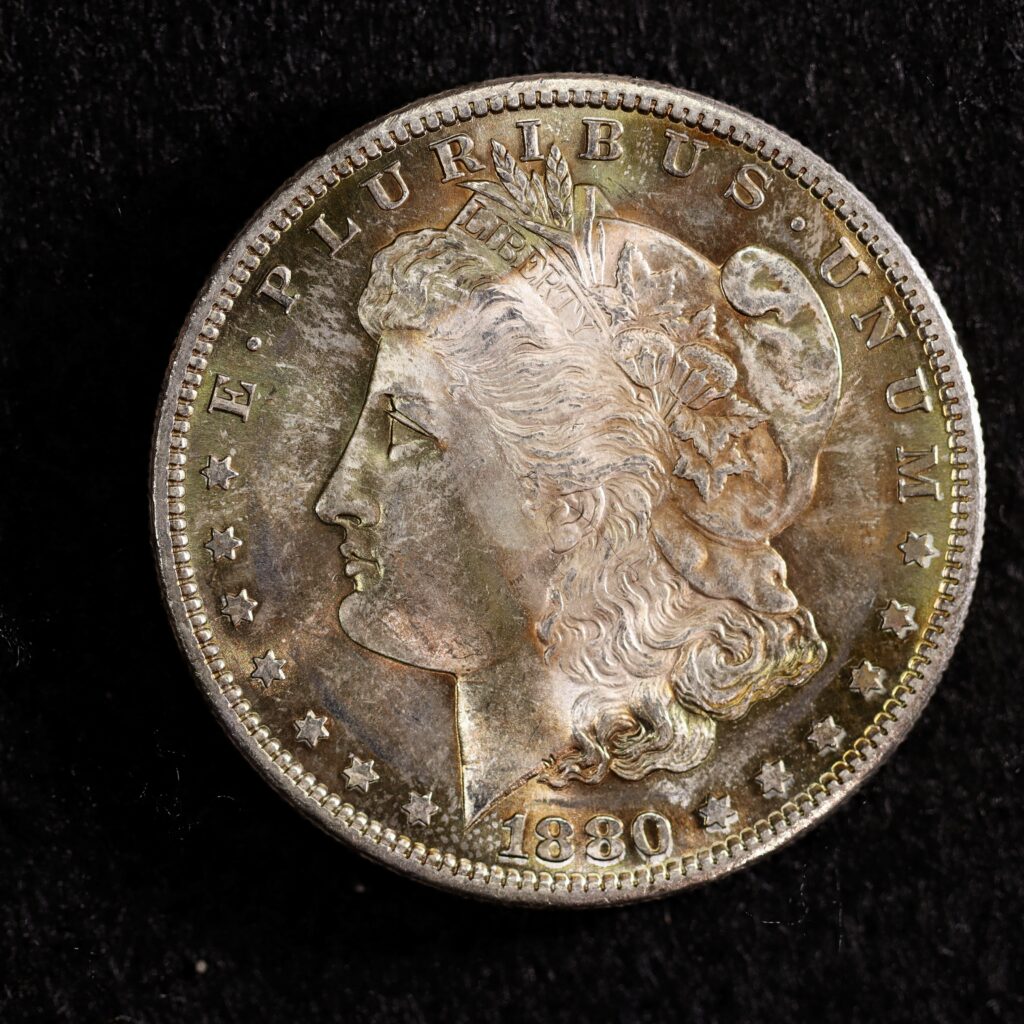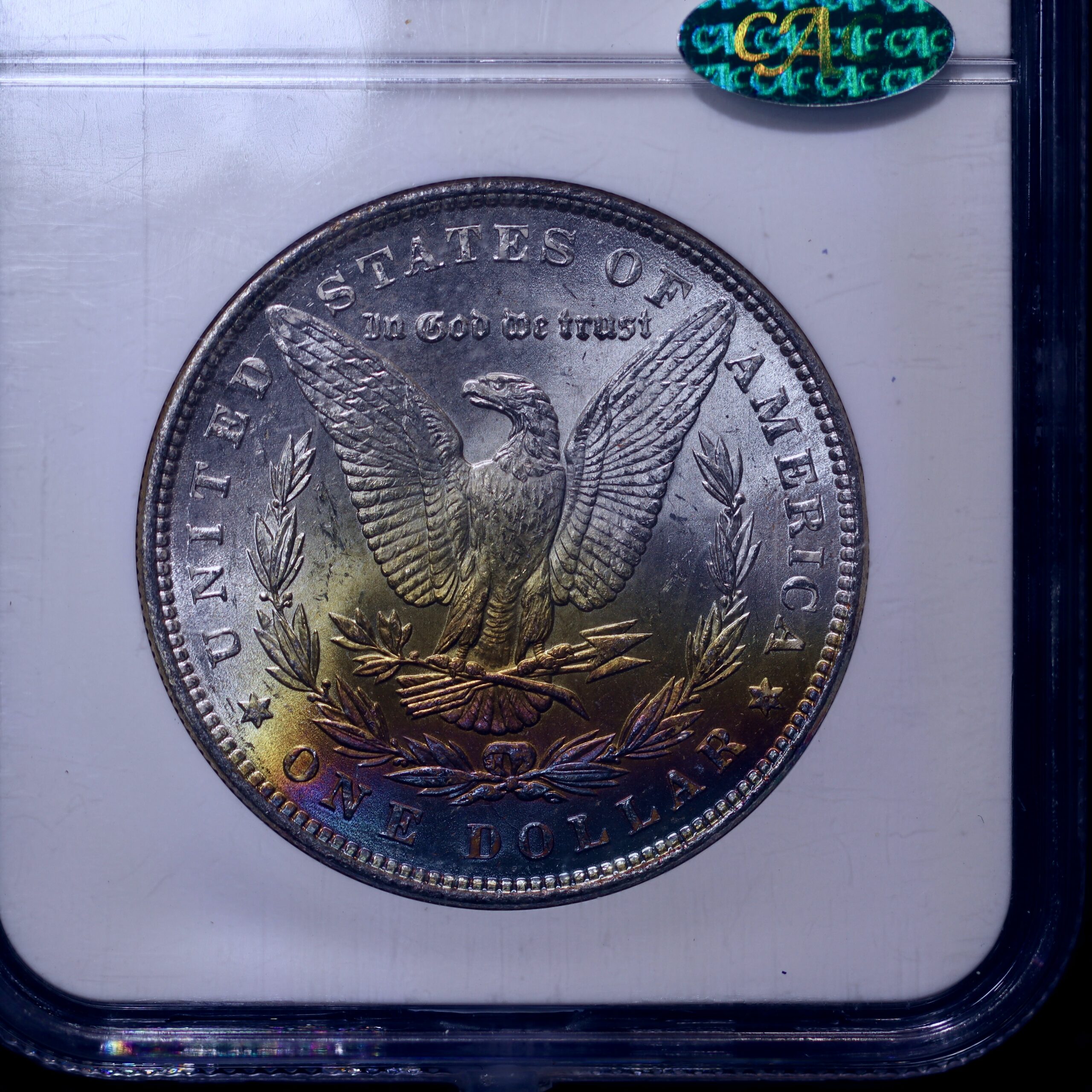Introduction
The 1880-S Morgan Dollar stands out among collectors for its exceptional toning and historical significance. In this post, we’ll delve into the unique characteristics of this coin, understand the toning process, and explore why it’s a prized piece for numismatists.
Understanding the 1880-S Morgan Dollar
Minted in San Francisco in 1880, this Morgan Dollar is renowned for its sharp strike and luster. Collectors often seek out this coin, especially those with natural toning that adds to its visual appeal.
The Art of Coin Toning
Toning refers to the natural coloration that develops on a coin’s surface over time. This occurs due to chemical reactions between the metal and environmental elements like air and moisture. For Morgan Dollars, especially those stored in paper rolls, the ends—known as “enders”—were more exposed to these elements, leading to unique toning patterns.

But what exactly is coin toning, and why do some Morgan Dollars, like our featured 1880-S, display such vivid colors?
Coin toning refers to the natural oxidation process that occurs when the coin’s metal interacts with environmental factors such as sulfur compounds found in paper wrappers, cloth bags, or even storage conditions like humidity and temperature variations. For instance, Morgan Dollars frequently acquired their toning from being stored as “roll enders.” These “enders”—coins placed at either end of paper-wrapped rolls—experienced prolonged exposure to sulfur-rich paper, air, and moisture, resulting in distinctive and vivid toning patterns.
A beautifully toned Morgan Dollar is highly desirable because each pattern is unique and considered natural artwork by collectors. Authentic, naturally toned coins command premium prices, especially if graded by reputable services such as PCGS (Professional Coin Grading Service) or NGC (Numismatic Guaranty Corporation), which authenticate and preserve their condition.
The 1880-S Morgan Dollar, known for its remarkable detail and superb minting quality, is especially sought-after when found with original, colorful toning. Collectors consider these coins showpieces due to their vibrant colors and pristine surfaces—characteristics that significantly enhance their market value and collector demand.

To further appreciate the allure and intricacies of toned Morgan Dollars, we highly recommend watching this excellent educational video from PCGS teaching you how to grade Morgan Dollars. The Graders are able to look “through” the tone on to the surface of the coin to determine if the tone naturally occurred or was helped with chemicals or other methods:
Whether you’re a seasoned numismatist or new to coin collecting, exploring toned Morgan Dollars like the stunning 1880-S offers an exciting and potentially rewarding journey into the fascinating world of numismatics.
Why Toned Morgan Dollars Are Valuable
Each toned Morgan Dollar is unique, with colors ranging from subtle hues to vibrant rainbows. Collectors value these coins not just for their beauty but also for their rarity. A naturally toned 1880-S Morgan Dollar can command a premium in the market, especially when authenticated by reputable grading services.
Conclusion
The 1880-S Morgan Dollar is more than just a piece of currency; it’s a work of art shaped by history and nature. Its unique toning tells a story, making it a must-have for collectors who appreciate the blend of beauty and history in numismatics.
Have some toned coins you want to help us evaluate? Let us know and shoot us an email!
Thanks for reading and good luck out there!

Leave a Reply